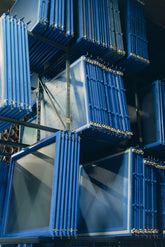
This printing method has been used industrially since the early 1900s. A piece of polyester fabric is inserted into a metal screen. Each screen corresponds to a portion of the design. The higher number of screens corresponds to a greater complexity and chromatic richness of the motif to be printed.
The company’s silk screen printing technique is part of its heritage. It is a traditional, slow and meticulous process, which transfers the colour on the fabric, screen after screen.

The printing department is equipped with 6 rotary printing tables, 8 flat screen printing trolley tables, a 12-colour screen printing and the interesting dye department where dyes are mixed for perfect print.
The printing department is equipped with 6 rotary printing tables, 8 flat screen printing trolley tables, a 12-colour screen printing and the interesting dye department where dyes are mixed for perfect print.
Read More
Read Less
Years of knowledge offers up to 35 colours of silk screen printing.
Years of knowledge offers up to 35 colours of silk screen printing.
Read More
Read Less
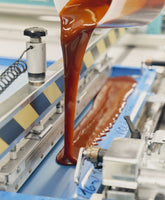
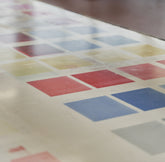
Screen printing has further evolved due to the Reverse process, which allows to have two different colour variants, one on the front and one on the back, without removing the fabric from the printing table.
Depending on the colours used, the process makes it possible to create different amounts of colour between the two parts of the garment to obtain a real double face effect.
Screen printing has further evolved due to the Reverse process, which allows to have two different colour variants, one on the front and one on the back, without removing the fabric from the printing table.
Depending on the colours used, the process makes it possible to create different amounts of colour between the two parts of the garment to obtain a real double face effect.
Read More
Read Less
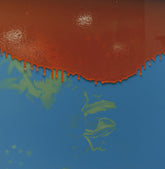
Machines measure the amount of colour for the printing process. Once it has been divided into the containers, the right amount of dye is poured onto the screen for the final rendering, thanks to the printer’s sensitivity. Specialised operators make this step a true art.
Machines measure the amount of colour for the printing process. Once it has been divided into the containers, the right amount of dye is poured onto the screen for the final rendering, thanks to the printer’s sensitivity. Specialised operators make this step a true art.
Read More
Read Less
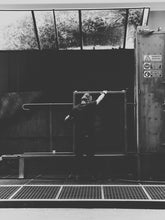
Once a print variant has been created, the print screens are washed and ready to recreate the same motif with different colour combinations.
Once a print variant has been created, the print screens are washed and ready to recreate the same motif with different colour combinations.
Read More
Read Less
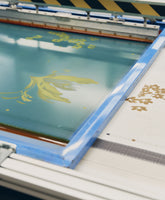
Mantero’s history is characterised by screen printing. This extraordinary technique enhanced the value of Como silk. Without photoengraving
there would be no screen printing and without screen printing the Como textile district would not be the same. This is why Mantero partnered with Foto Azzurra, a company that has been producing (composing, photocomposing and photoengraving) media for screen printing since 1989.
Mantero’s history is characterised by screen printing. This extraordinary technique enhanced the value of Como silk. Without photoengraving
there would be no screen printing and without screen printing the Como textile district would not be the same. This is why Mantero partnered with Foto Azzurra, a company that has been producing (composing, photocomposing and photoengraving) media for screen printing since 1989.
Read More
Read Less
By placing the frame on the fabric and pressing with a special blade - through the inks' porous areas - the colour passes over the material, maintaining the precise design in a highly defined way.
By placing the frame on the fabric and pressing with a special blade - through the inks' porous areas - the colour passes over the material, maintaining the precise design in a highly defined way.
Read More
Read Less

Screen printing speed depends on the project type, total number of colours and kind of motif. It can take a whole day to produce 40 items of a scarf rich in colours and with pattern complexity.
Screen printing speed depends on the project type, total number of colours and kind of motif. It can take a whole day to produce 40 items of a scarf rich in colours and with pattern complexity.
Read More
Read Less





